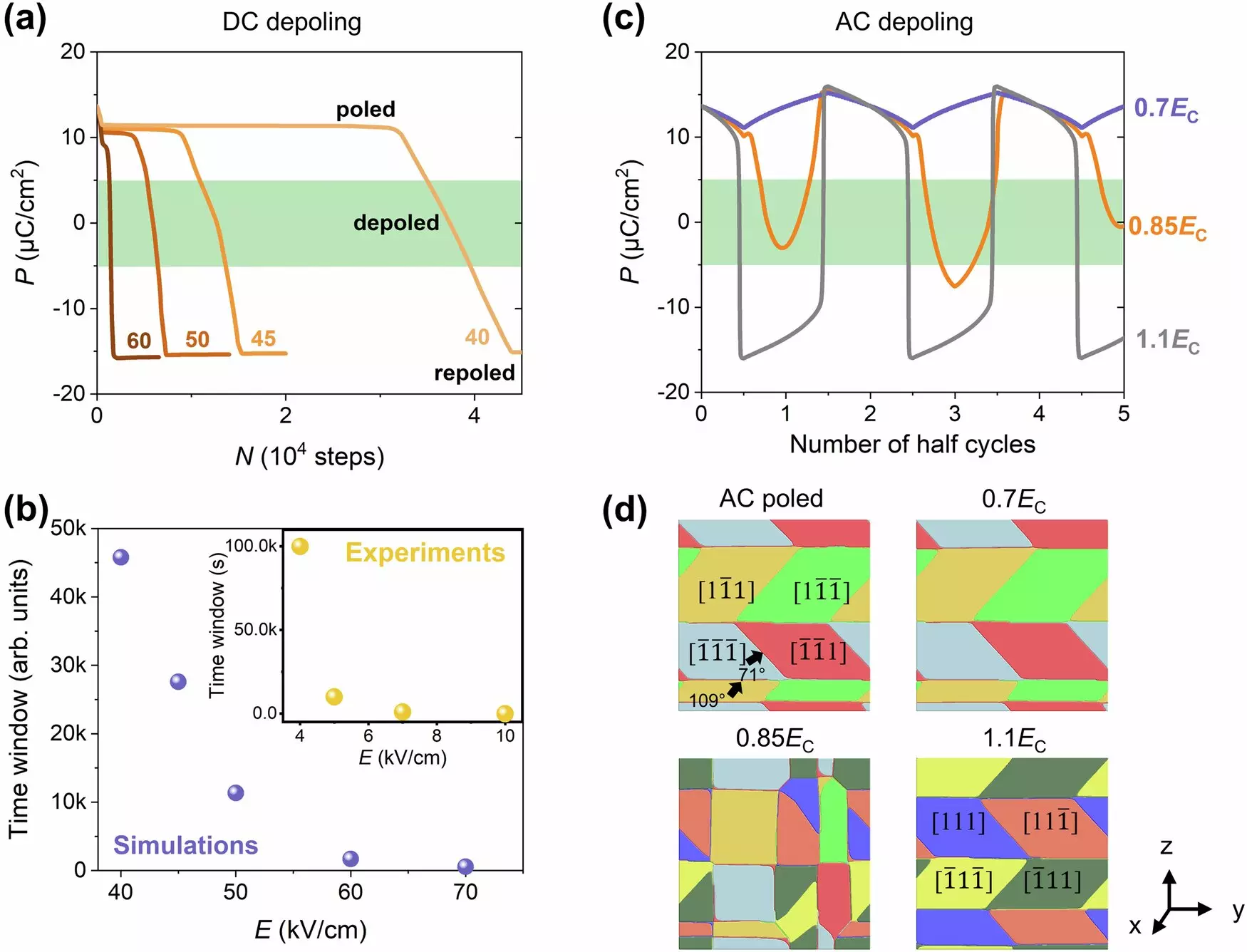Piezoelectric materials play a crucial role in the functioning of various technologies, particularly in the fields of ultrasound and sonar. These materials, capable of converting mechanical energy into electrical energy and vice versa, are especially valuable in applications that require the generation and detection of sound waves. Their effectiveness, however, hinges on an essential condition: the alignment of dipoles within the material. When subjected to heat and pressure, the properties of these piezoelectric materials can deteriorate, making it difficult to utilize them efficiently. This article will explore an innovative approach that allows for the restoration of the properties of piezoelectric materials at room temperature, ultimately changing the landscape of ultrasound technology.
Piezoelectric materials predominantly exhibit ferroelectric characteristics, which means they feature spontaneous polarization — a state where pairs of positively and negatively charged ions (dipoles) exist in the material. In order for these materials to perform effectively in generating or sensing sound waves, the dipoles must be aligned. This alignment is typically achieved through a process known as “poling,” which involves applying an external electric field to orient the dipoles in a uniform direction. When these materials are subjected to high temperatures or pressures, as can happen during normal use or even storage conditions, the dipoles can lose their alignment, leading to a decrease in functionality.
The implications of this loss are far-reaching. For manufacturers, the risk of depoling limits their material choices and production processes for ultrasound devices. Elevated temperatures can cause alignment issues even at seemingly low levels (as low as 70°C), further complicating the design and durability of these technologies. Additionally, the heating generated during the usage of such devices can exacerbate the depoling problem. Traditional methods for restoring dipole alignment typically involve disassembling the device and subjecting the piezoelectric material to high temperatures (300°C or more), which can be a costly and time-consuming process.
Researchers, recognizing the pressing need for a more efficient approach, have recently developed a technique that enables the depoling and repoling of piezoelectric materials without the requirement of high heat. According to a study published in *Nature Communications*, this breakthrough means that devices can be repaired or maintained without the need for disassembly. The new method leverages alternating current (AC) electric fields, offering a less invasive means of managing dipole alignment.
Understanding the mechanics behind this new technique is essential. Traditionally, the dominant method to achieve pole alignment involves the application of a direct current (DC) electric field, which reliably aligns dipoles. However, depoling solely with a DC field has proven challenging. This new research reveals that by utilizing an AC field, it is possible to induce dipole oscillation, allowing for easier realignment and partial or complete depoling depending on the initial poling method used.
Furthermore, if materials were initially poled using an AC field, researchers found that the same AC field could entirely depole them, paving the way for versatile applications in device manufacturing and maintenance.
The ability to re-pole piezoelectric materials at room temperature opens up a world of possibilities for the design and manufacturing processes surrounding ultrasound and sonar technologies. With this newfound flexibility, developers can rethink the materials and techniques they use, enhancing the overall performance and longevity of devices without the constraints imposed by traditional thermal management strategies.
The shift away from heat-based techniques also promises to reduce costs associated with production and repair by minimizing waste. Often, expensive piezoelectric materials are discarded after malfunction when they can be revived through the new technique without throwing the entire device away. The potential for recycling and reusing these materials could be a game-changer in sustainability efforts within the technology sector.
As researchers in materials science continue to innovate and explore the boundaries of what is possible, the development of techniques to maintain and restore the properties of piezoelectric materials at room temperature marks a significant advancement. The implications for the industries reliant on ultrasound and sonar technologies are vast, translating not only to improved device performance but also to greater efficiency and sustainability in production processes. With this groundbreaking approach, the future of ultrasound technologies looks bright, paving the way for improved diagnostic tools, medical applications, and a host of other innovations that have yet to be imagined.


Leave a Reply